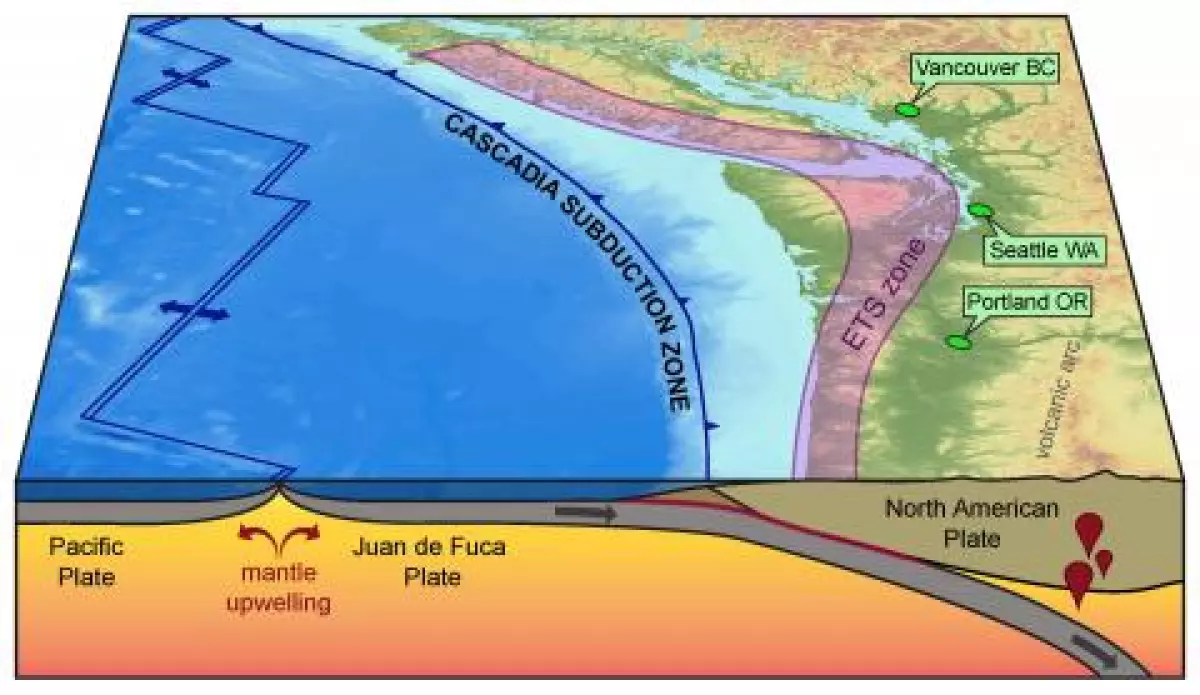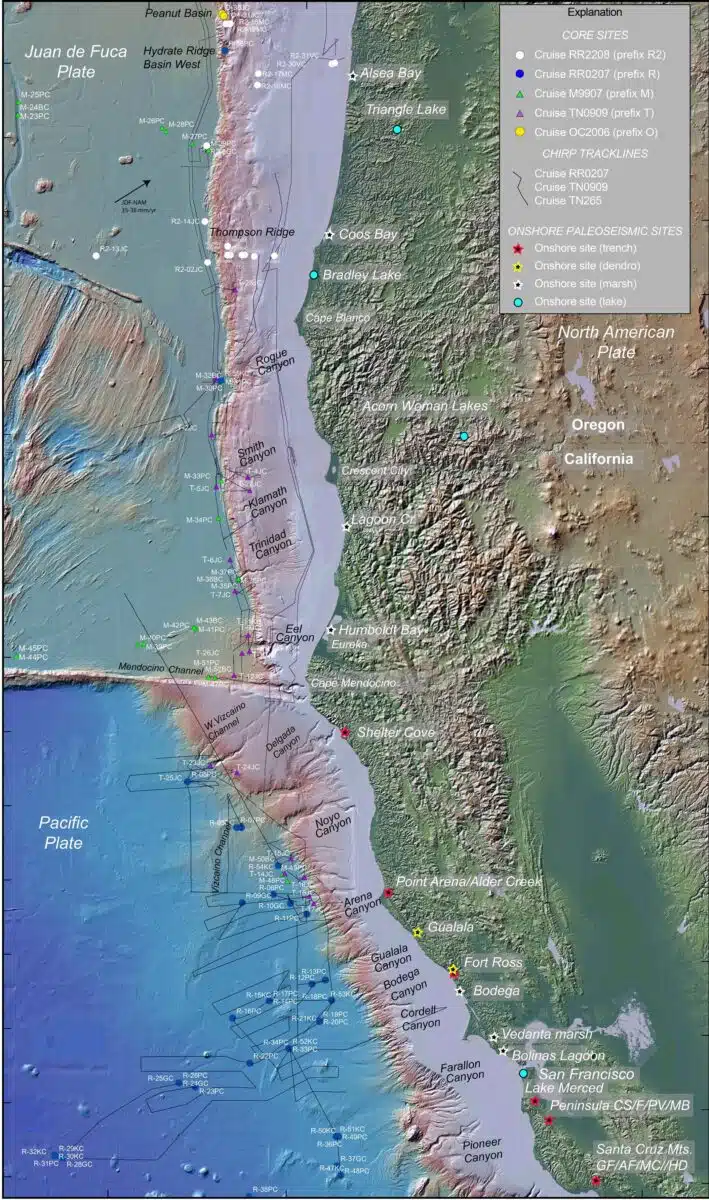A new geological study suggests that California’s San Andreas Fault and the Cascadia Subduction Zone, two of the most powerful seismic systems in North America, may be more connected than previously thought, raising the stakes for potential back-to-back megaquakes. The findings, published in the journal Geosphere, propose that these two faults may have ruptured in rapid succession in the past, most notably in the year 1700, and could do so again.
New Sediment Evidence Points To A Double Quake In 1700
According to the study, a massive Cascadia earthquake, estimated at magnitude 9, may have triggered a subsequent rupture on the northern San Andreas Fault, possibly just minutes or hours later. This sequential quake scenario raises pressing questions about California’s readiness to face compounded seismic disasters.
Researchers believe that the 1700 event serves as a key example. At that time, Native oral histories, tsunami records from Japan, and land subsidence data all pointed to a catastrophic rupture off the Pacific Northwest coast. The idea that this was immediately followed by a San Andreas quake forces a reevaluation of regional earthquake models, especially for emergency planning and infrastructure response.
 The Cascadia Subduction Zone, located offshore from northern California through Oregon, Washington, and into British Columbia, has the potential to generate a magnitude 9 earthquake. Credit: John Wesley Powell Center for Analysis and Synthesis / USGS.
The Cascadia Subduction Zone, located offshore from northern California through Oregon, Washington, and into British Columbia, has the potential to generate a magnitude 9 earthquake. Credit: John Wesley Powell Center for Analysis and Synthesis / USGS.
Layers Reveal Twin Quakes
A breakthrough came from deep-sea samples retrieved near Noyo Canyon, off California’s North Coast. In a puzzling twist, the sediment layers appeared reversed, fine silts beneath coarser sands, contrary to what geologists expect after a single submarine landslide caused by one quake.
Chris Goldfinger, co-author of the study and researcher at Oregon State University, explained that the lighter materials were likely dislodged by weaker shaking from Cascadia, followed closely by stronger ground motion from a closer San Andreas event, which brought down the heavier sand particles. “Suddenly, it all made sense,” he told the Los Angeles Times. This geological signature aligns with the hypothesized sequence from 1700 and supports the theory of two nearly consecutive quakes.
 Map of the southern Cascadia subduction zone and northern California margins showing compiled bathymetry data, sediment core locations, and subbottom profiling track lines. Credit: Geosphere
Map of the southern Cascadia subduction zone and northern California margins showing compiled bathymetry data, sediment core locations, and subbottom profiling track lines. Credit: Geosphere
Geologic Record Shows Fault Connection
According to Goldfinger, the 1700 event isn’t an isolated case. Similar dual-quake scenarios may have occurred multiple times over the last 2,500 years, including between 1425–1475, 1175–1225, and even as early as 475 BC. These findings suggest that the connection between the two faults is not rare, but part of a repeating pattern in seismic history.
Jason Patton, a geologist with the California Geological Survey and co-author of the study, noted that while it’s impossible to determine the exact interval between these ruptures, it may have ranged from minutes to days. Patton also pointed out that the 1906 San Francisco seismic shock appears to be the only major San Andreas event not preceded by a Cascadia rupture, based on sediment and paleoseismic evidence available today.
Worse Than 1906?
The direction of fault rupture plays a critical role in the intensity of ground shaking experienced by nearby cities. In 1906, the San Andreas rupture moved away from San Francisco, limiting the damage compared to what might happen if the next major quake starts further north.
Evidence found near Lake Merced, just south of San Francisco, suggests a significant seismic disturbance occurred along the northern San Andreas Fault around 1700. This matches tree ring data from coastal redwoods in the region, reinforcing the timeline proposed in the research. According to the Los Angeles Times, if a future rupture begins near Cape Mendocino and moves southward, the Bay Area could experience stronger and more destructive shaking than during the 1906 event.

